
William Goldman was an American novelist, playwright, and screenwriter. He first came to prominence in the 1950s as a novelist before turning to screenwriting. Among other accolades, Goldman won two Academy Awards in both writing categories—once for Best Original Screenplay for Butch Cassidy and the Sundance Kid (1969) and once for Best Adapted Screenplay for All the President's Men (1976).

Cornelius Crane "Chevy" Chase is an American comedian, actor, and writer. He became the breakout cast member in the first season of Saturday Night Live (1975–1976), where his recurring Weekend Update segment became a staple of the show. As both a performer and a writer on the series, he earned two Primetime Emmy Awards out of four nominations.

Ghostbusters is a 1984 American supernatural comedy film directed and produced by Ivan Reitman, and written by Dan Aykroyd and Harold Ramis. It stars Bill Murray, Aykroyd, and Ramis as Peter Venkman, Ray Stantz, and Egon Spengler, three eccentric parapsychologists who start a ghost-catching business in New York City. It also stars Sigourney Weaver and Rick Moranis, and features Annie Potts, Ernie Hudson, and William Atherton in supporting roles.
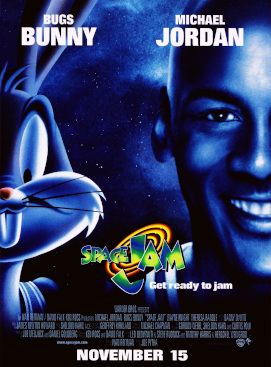
Space Jam is a 1996 American live-action/animated sports comedy film directed by Joe Pytka and written by Leo Benvenuti, Steve Rudnick, Timothy Harris, and Herschel Weingrod. The film stars basketball player Michael Jordan as a fictional version of himself; the live-action cast also includes Wayne Knight and Theresa Randle, as well as cameos by Bill Murray and several NBA players, while Billy West, Dee Bradley Baker, Kath Soucie and Danny DeVito headline the voice cast. The film follows Jordan as he is brought out of retirement by the Looney Tunes characters to help them win a basketball match against invading aliens intent on enslaving them as amusement park attractions.
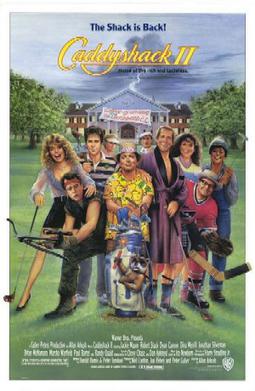
Caddyshack II is a 1988 American sports comedy film and a sequel to the 1980 film Caddyshack. Directed by Allan Arkush and written by Harold Ramis and PJ Torokvei, it stars Jackie Mason, Robert Stack, Dyan Cannon, Dina Merrill, Jonathan Silverman, Brian McNamara, Marsha Warfield, Paul Bartel, and Randy Quaid with special appearances by Chevy Chase and Dan Aykroyd. It tells the story of a wealthy and widowed real estate developer who goes up against Bushwood County Club's snobbish president in a golfing tournament.

Big Trouble in Little China is a 1986 American fantasy action-comedy film directed by John Carpenter, and starring Kurt Russell, Kim Cattrall, Dennis Dun and James Hong. The film tells the story of truck driver Jack Burton (Russell), who helps his friend Wang Chi (Dun) rescue Wang's green-eyed fiancée from bandits in San Francisco's Chinatown. They go into the mysterious underworld beneath Chinatown, where they face an ancient sorcerer named David Lo Pan (Hong), who requires a woman with green eyes to marry him in order to be released from a centuries-old curse.
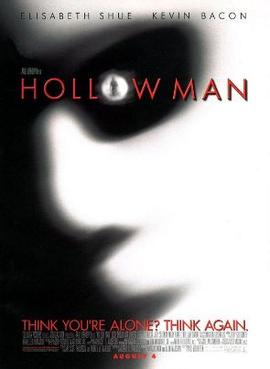
Hollow Man is a 2000 American science fiction horror film directed by Paul Verhoeven, written by Andrew W. Marlowe, and starring Elisabeth Shue, Kevin Bacon, Josh Brolin, Kim Dickens, Greg Grunberg, Joey Slotnick, Mary Randle, and William Devane. The film is about Sebastian Caine, a scientist who volunteers to be the first human test subject for a serum that renders the user invisible. When his fellow scientists are unable to restore him back to normal, he becomes increasingly unstable and eventually goes on a killing spree. The film received negative reviews but was a financial success, grossing $190.2 million worldwide. It was nominated for an Academy Award for Best Visual Effects in 2001, losing to Gladiator.
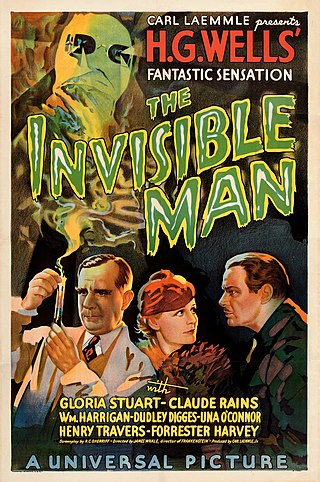
The Invisible Man is a 1933 American science fiction horror film directed by James Whale based on H. G. Wells' 1897 novel, The Invisible Man, produced by Universal Pictures, and starring Gloria Stuart, Claude Rains and William Harrigan. The film involves a Dr. Jack Griffin (Rains) who is covered in bandages and has his eyes obscured by dark glasses, the result of a secret experiment that makes him invisible, taking lodging in the village of Iping. Never leaving his quarters, the stranger demands that the staff leave him completely alone until his landlady and the villagers discover he is invisible. Griffin goes to the house of his colleague, Dr. Kemp and tells him of his plans to create a reign of terror. His fiancée Flora Cranley, the daughter of his employer Dr. Cranley, soon learn that Griffin's discovery has driven him insane, leading him to prove his superiority over other people by performing harmless pranks at first and eventually turning to murder.

Thank You for Smoking is a 2005 American satirical black comedy film written and directed by Jason Reitman and starring Aaron Eckhart, based on the 1994 satirical novel of the same name by Christopher Buckley. It follows the efforts of Big Tobacco's chief spokesman, Nick Naylor, who lobbies on behalf of cigarettes using heavy spin tactics while also trying to remain a role model for his 12-year-old son. Maria Bello, Adam Brody, Sam Elliott, Katie Holmes, Rob Lowe, William H. Macy, J. K. Simmons, and Robert Duvall appear in supporting roles.

Fletch is a 1985 American comedy thriller film directed by Michael Ritchie and written by Andrew Bergman. Based on Gregory Mcdonald's popular Fletch novels, the film stars Chevy Chase as the eponymous character. It co-stars Tim Matheson, Dana Wheeler-Nicholson, Geena Davis and Joe Don Baker.

The Invisible Man Returns is a 1940 American horror science fiction film directed by Joe May. The film stars Cedric Hardwicke, Vincent Price, Nan Grey and John Sutton. The film is a sequel to the 1933 film The Invisible Man, and the second film in the Invisible Man film series. The film is about Sir Geoffrey Radcliffe (Price) who is condemned for a murder he did not commit, which leads to him begging Dr. Frank Griffin (Sutton) to inject him with the invisibility serum despite Griffin's warning that the serum will drive him mad.
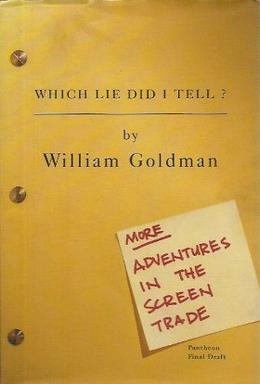
Which Lie Did I Tell?: More Adventures in the Screen Trade is a work of non-fiction first published in 2000 by novelist and screenwriter William Goldman. It is the follow-up to his 1982 book Adventures in the Screen Trade.

Legal Eagles is a 1986 American legal romantic comedy thriller film directed by Ivan Reitman, written by Jim Cash and Jack Epps, Jr. from a story by Reitman and the screenwriters, and starring Robert Redford, Debra Winger, and Daryl Hannah.

Year of the Comet is a 1992 romantic comedy adventure film directed by Peter Yates and starring Tim Daly, Penelope Ann Miller, and Louis Jourdan in his final film role. The film was written by William Goldman and produced by Alan Brown and Phil Kellogg. The plot concerns the pursuit of the most valuable bottle of wine in history. The title refers to the year it was bottled, 1811, which was known for the Great Comet of 1811, and also as one of the best years in history for European wine.

Nothing but Trouble is a 1991 American comedy horror film written and directed by Dan Aykroyd in his directorial debut, based on a story by his brother Peter, and starring Chevy Chase, Dan Aykroyd, John Candy, and Demi Moore. It tells the story of two yuppies and the clients of one of them who are taken to court for running a stop sign in the bizarre, financially bankrupt small town of Valkenvania, which is dominated by a 106-year-old judge. Tupac Shakur made his acting debut, as a member of the rap group Digital Underground.

Harper is a 1966 American mystery film based on Ross Macdonald's 1949 novel The Moving Target and adapted for the screen by novelist William Goldman, who admired MacDonald's writings. The film stars Paul Newman as Lew Harper, and was directed by Jack Smight, with a cast that includes Robert Wagner, Julie Harris, Janet Leigh, Shelley Winters, Lauren Bacall, and Arthur Hill.
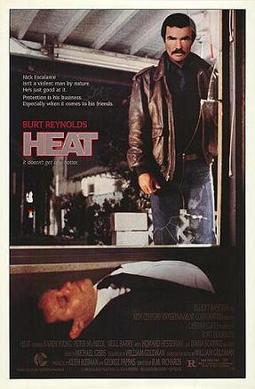
Heat is a 1986 American neo-noir dramatic action thriller film about an ex-mercenary working as a bodyguard in Las Vegas. The film was written by William Goldman, based on his 1985 novel of the same name. Heat was directed by Dick Richards and Jerry Jameson. The film stars Burt Reynolds, Karen Young, Peter MacNicol, Howard Hesseman, Neill Barry and Joseph Mascolo.
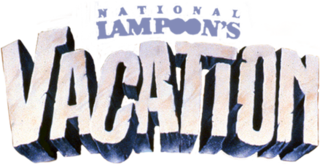
National Lampoon's Vacation film series is a comedy film series initially based on John Hughes' short story "Vacation '58" that was originally published by National Lampoon magazine. The series is distributed by Warner Bros. and consists of five main films, two of which are not sponsored by National Lampoon, and one spin-off. In recent years, the series has been the inspiration for various advertising campaigns featuring some of the original cast members. The series portrays the misadventures of the Griswold family, whose attempts to enjoy vacations and holidays are plagued with continual disasters and strangely embarrassing predicaments.

Memoirs of an Invisible Man is a 1987 science fiction novel by H. F. Saint.
Home Movie: The Princess Bride is an American comedy miniseries directed by Jason Reitman, a "fan made" recreation of the 1987 film The Princess Bride. Produced while the participating actors were isolating themselves during the COVID-19 pandemic in the United States, it is filmed in a deliberately DIY fashion, with an ensemble cast recording their scenes on their own smartphones, and multiple actors playing the most prominent roles. It features the final screen performance of Carl Reiner, the father of the original film's director Rob Reiner. It premiered in short installments in June and July 2020, on Quibi.



















